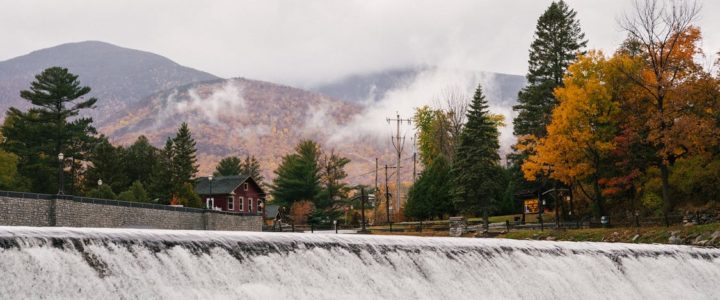
The first engineers of dams were beavers, who gnawed on trees and gathered vegetation to build these ecosystem structures. Who would have thought we could learn something about surface water management from semi-aquatic rodents? Today, there are currently 36,222 dams in the world and most of the world’s largest rivers are dammed. The purpose of dams is to attenuate and delay extremes of rainfall and thus, flooding. Dams store deep pools of water and filter water as it flows downstream, and this construction prevents flooding.
The ideal place to build a dam is in a gorge. For example, Hoover Dam, which opened in 1935, is located in Clark County, Nevada in a steep and narrow gorge where there is not much wildlife or people who live in this surrounding area. When constructed, Hoover Dam harnessed the power of the Colorado River to generate electricity to major cities—Los Angeles, Las Vegas, and Phoenix—and was capable of irrigating 2 million acres and generating power to 1.3 million homes. Now, however, in 2020, Hoover Dam provides very little hydroelectric power to Las Vegas and serves its purpose today as more of a historical landmark. In North America dams are used mainly for recreation, in Asia for irrigation, and in Europe for hydroelectricity. Dams are also used worldwide for drinking water, navigation, and water storage. The 1950s marked the peak of the dam-building era, but since then, more negative perspectives developed.

Dams can cause a multitude of environmentally damaging effects. Dams block the passage of migrating fish, and as a result can kill fish from inundating spawning areas, raising the river’s temperature, and disrupting the river flow. Dams also can trap sediment and then bury rock riverbeds where fish spawn, and egg beds are also threatened by river floods. Dams cause a loss of livelihood from fisherman, trap pollutants that accumulate in fish making them dangerous for people and wildlife, pose a health hazard to fresh drinking water, cover up vegetation, restrict sediments that are responsible for fertile lands downstream, and require a great deal of maintenance. Dams have caused earthquakes because of the filling of large dam reservoirs. Lastly, dams are a significant source of greenhouse gas emissions since vegetation and algae are decaying with the changing water level, which causes methane emissions. Dams are all different and can be effective, problematic, or just not useful. In fact, around 2,200 dams in the U.S. produce hydropower and about 85,000 do not. So, how do we build effective dams? Well, we need to examine the dam site. Dams at effective sites are located on upper tributaries and gorges; dams at problematic sites are located on the stems of large main rivers.
Currently, many hydroelectric sites are best left un-dammed, since building dams there (specifically in the U.S.) would highly threaten the surrounding environment. Since many potential sites are undesirable, other renewable technologies exist that are more feasible and sustainable. It is now imperative to implement a detailed plan in order to examine the environmental impacts of a dam, so that hydroelectric dams can provide the greenest electricity possible. Also, looking at alternatives to dams is equally important when determining a rational, affordable, and sustainable solution in the long-run.
The solution to water management is complicated. Dams can provide a great source of hydropower, but they can also totally disrupt ecosystems. In fact, many dams are currently being taken down—the US has removed 1,394 dams since 1912. This process of removing damaged dams protects the surrounding population and ecosystem, and it also enables rivers to restore to their natural state. However, dam removal is also very expensive; for example, the removal of four fans on Klamath River cost around $200 million. In the end, determining the location of the dam is crucial. Lots of expertise in quantifying and examining the trade-offs of potential dam construction is necessary, as well as acquiring multiple perspectives from diverse stakeholders, such as government agencies, homeowners, and conservation organizations. Decision-makers have to examine the potential impacts of dams including the economic benefits, ecosystem effects, habitat availability for migratory fish, water storage, drinking water supply, water quality, recreational use, waterfront property impacts, and hydroelectric power production. In some parts of the world, dams are effective in providing hydropower, flood control and irrigation. But, in other places in the world like the U.S., there is an increasing movement to restore rivers by removing dams that serve no purpose, pose safety risks, or cause negative effects on ecosystems.
Do you think the disadvantages of dams outweigh the positives or vice versa? Let us know in the comments below.


